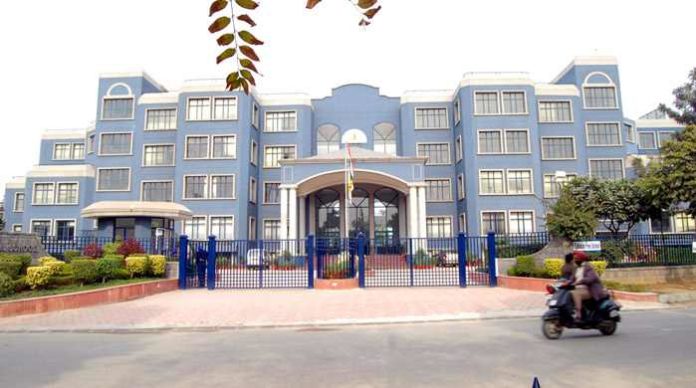Urbanization, the process by which populations concentrate into cities, is a defining feature of the modern era. As the world’s population continues to grow and urbanize, the sustainability of megacities becomes a critical concern. Megacities, typically defined as urban areas with populations exceeding ten million people, face unique challenges in balancing the needs of their inhabitants with environmental conservation efforts. In this essay, we will explore the complex relationship between urbanization and sustainability, examining the potential for megacities to become eco-friendly.
Understanding Urbanization and Sustainability
Urbanization is a multifaceted phenomenon driven by factors such as industrialization, rural-to-urban migration, and population growth. While cities offer economic opportunities, cultural diversity, and access to services, they also place significant strain on natural resources and ecosystems. The rapid expansion of megacities exacerbates these challenges, leading to issues such as air and water pollution, traffic congestion, inadequate waste management, and loss of green spaces.
Sustainability, on the other hand, entails meeting the needs of the present without compromising the ability of future generations to meet their own needs. Achieving sustainability in the context of megacities requires addressing environmental, social, and economic dimensions. Sustainable urban development aims to create cities that are environmentally resilient, socially inclusive, and economically viable over the long term.
Challenges Facing Megacities
Megacities face a host of interconnected challenges that complicate efforts to promote sustainability. These challenges include:
1. Environmental Degradation: Rapid urbanization leads to increased pollution, deforestation, habitat destruction, and loss of biodiversity. Megacities are often characterized by high levels of air and water pollution, which pose significant health risks to residents and strain ecosystems.
2. Resource Scarcity: Megacities consume vast amounts of resources, including energy, water, and raw materials. Meeting the needs of growing urban populations puts pressure on finite resources and exacerbates issues such as energy insecurity and water scarcity.
3. Infrastructure Deficits: Many megacities struggle with inadequate infrastructure, including transportation, housing, sanitation, and healthcare. Insufficient infrastructure not only diminishes quality of life for residents but also hinders efforts to promote sustainability.
4. Social Inequities: Urbanization can exacerbate social inequalities, with marginalized communities often bearing the brunt of environmental degradation and resource scarcity. Access to basic services such as clean water, sanitation, healthcare, and education is unevenly distributed in many megacities, leading to disparities in living standards and opportunities.
Strategies for Eco-Friendly Megacities
Despite these challenges, there are opportunities to promote sustainability in megacities through a combination of policy interventions, technological innovations, and community engagement. Some key strategies include:
1. Sustainable Urban Planning: Adopting compact, mixed-use development patterns can reduce sprawl, minimize resource consumption, and promote walkability and public transit use. Incorporating green infrastructure such as parks, green roofs, and permeable surfaces can enhance urban biodiversity, mitigate heat island effects, and improve stormwater management.
2. Renewable Energy Transition: Transitioning to renewable energy sources such as solar, wind, and hydroelectric power can reduce greenhouse gas emissions and dependence on fossil fuels. Implementing energy-efficient building codes and retrofitting existing infrastructure can further enhance energy efficiency and resilience.
3. Integrated Transportation Systems: Investing in public transit, cycling infrastructure, and pedestrian-friendly streets can reduce reliance on private automobiles, alleviate traffic congestion, and improve air quality. Embracing smart mobility solutions such as ride-sharing, electric vehicles, and autonomous transportation can enhance efficiency and accessibility.
4. Circular Economy Practices: Adopting circular economy principles can minimize waste generation, promote resource efficiency, and create economic opportunities. Encouraging recycling, composting, and reuse initiatives can reduce landfill burdens and conserve valuable materials.
5. Community Engagement and Participation: Engaging local communities in decision-making processes and fostering grassroots initiatives can enhance social cohesion, empower residents, and foster a sense of ownership over sustainability efforts. Promoting environmental education and awareness campaigns can inspire behavior change and cultivate a culture of sustainability.
6. Green Infrastructure and Biodiversity Conservation: Protecting and enhancing urban green spaces, such as parks, forests, and wetlands, can provide multiple benefits for megacities. Green infrastructure not only improves air quality, regulates temperature, and mitigates flood risks but also enhances recreational opportunities, mental health, and biodiversity. Preserving natural habitats and creating wildlife corridors within urban areas promote ecological connectivity and support diverse flora and fauna.
7. Sustainable Water Management: Implementing integrated water management strategies can address water scarcity, pollution, and flooding challenges in megacities. Investing in water-efficient technologies, such as low-flow fixtures, greywater recycling, and rainwater harvesting, can reduce water consumption and wastewater generation. Enhancing stormwater management through green infrastructure, permeable pavements, and constructed wetlands can minimize runoff, improve water quality, and recharge aquifers.
8. Climate Resilience and Adaptation: Megacities are increasingly vulnerable to climate change impacts, including extreme weather events, sea-level rise, and heatwaves. Building climate-resilient infrastructure, such as seawalls, flood barriers, and green roofs, can enhance urban resilience and protect vulnerable populations. Implementing nature-based solutions, such as coastal restoration, mangrove reforestation, and urban forests, can enhance climate adaptation while providing multiple co-benefits.
Case Studies of Eco-Friendly Megacities:
Several megacities around the world have made notable strides in promoting sustainability and environmental stewardship. For example:
1. Copenhagen, Denmark: Copenhagen has implemented ambitious climate goals, aiming to become carbon-neutral by 2025. The city has invested in renewable energy, cycling infrastructure, green spaces, and sustainable urban development projects.
2. Curitiba, Brazil: Curitiba is renowned for its innovative public transit system, including dedicated bus lanes, integrated transport hubs, and fare integration. The city’s emphasis on urban planning, green spaces, and waste management has earned it a reputation as a model of sustainable urban development.
3. Singapore: Singapore has prioritized environmental sustainability through initiatives such as water conservation, green building standards, and urban greenery enhancement. The city-state has also invested in renewable energy, clean transportation, and climate resilience measures.
In conclusion, megacities play a central role in the global urbanization trend, presenting both challenges and opportunities for sustainability. While the scale and complexity of megacities pose formidable challenges, concerted efforts to promote eco-friendly urban development can yield significant environmental, social, and economic benefits. By adopting holistic approaches that integrate urban planning, technology, policy, and community engagement, megacities can strive towards a more sustainable future for generations to come.
By: Samarth Kharbanda
Write and Win: Participate in Creative writing Contest & International Essay Contest and win fabulous prizes.

















